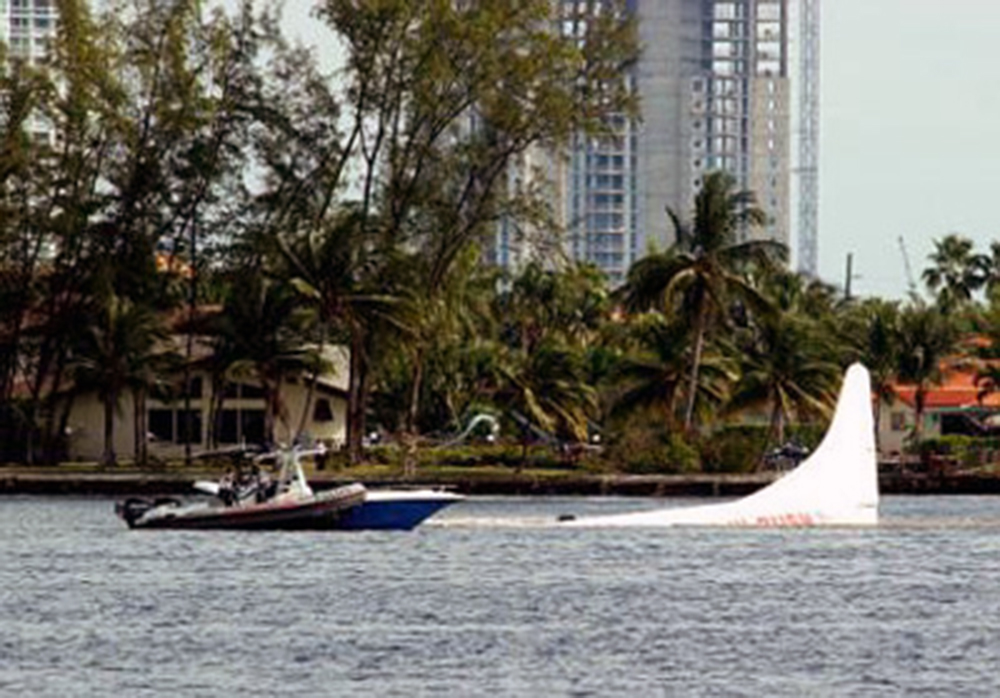Zone
Crash of a Learjet 60 in Aspen
Date & Time:
Jun 7, 2012 at 1224 LT
Registration:
N500SW
Survivors:
Yes
Schedule:
Miami-Opa Locka - Aspen
MSN:
60-017
YOM:
1993
Crew on board:
2
Crew fatalities:
Pax on board:
6
Pax fatalities:
Other fatalities:
Total fatalities:
0
Captain / Total hours on type:
600.00
Aircraft flight hours:
6456
Circumstances:
While the first officer was flying the airplane on a visual approach to the airport located in a steep mountain valley, the tower controller informed him that the pilot of a Citation that had landed about 10 minutes earlier had reported low-level windshear with a 15-knot loss of airspeed on short final. The first officer used the spoilers while on the left base leg and then maneuvered the airplane in an "S-turn" on the final leg to correct for a too-steep approach. Just as the airplane was about to touch down with the airspeed decreasing, the captain made several calls for "power" and then called for a "go around." However, the first officer did not add power for a go-around, and the captain did not take control of the airplane. Both pilots reported that, when the airplane was about 30 ft above ground level (agl), they felt a sensation that the airplane had "stopped flying" with a simultaneous left roll, which is indicative of an aerodynamic stall, followed by an immediate impact with terrain. After striking obstructions that completely separated the right main landing gear and the right flap, the airplane came to rest upright in the dirt on the side of the runway about 4,000 ft from the initial impact point. The airplane sustained substantial damage to the fuselage and both wings. All eight occupants evacuated through the main cabin door. There was a substantial fuel spill but no postimpact fire. Both pilots reported no mechanical malfunctions or failures of the airplane, and neither pilot reported an uncommanded loss of engine power. Data from the enhanced ground proximity warning system showed that seven warning events occurred in the last 3 minutes before the accident. The first warning was for "sink rate," and it occurred when the airplane was about 1,317 ft agl and in a 3,400-ft-per-minute descent. The last warning was for "bank angle," and it occurred about 10 seconds before touchdown as the airplane exceeded 42 degrees of bank when it was about 200 ft agl. The wind recorded at the airport at the time of the accident would have resulted in a 12-knot variable tailwind with gusts to 18 knots. The evidence is consistent with the first officer flying a non stabilized approach with a decreasing airspeed during low-level windshear conditions. The first officer did not properly compensate for the known low-level windshear conditions and allowed the airspeed to continue to decrease and the bank angle to increase until the airplane experienced an aerodynamic stall.
Probable cause:
The first officer's failure to maintain adequate airspeed and his exceedance of the airplane's critical angle-of-attack during the final approach in known low-level windshear conditions, which resulted in an aerodynamic stall. Contributing to the accident were the first officer's failure to initiate a go-around when commanded and the captain's lack of remedial action when he recognized that the approach was unstabilized.
Final Report:
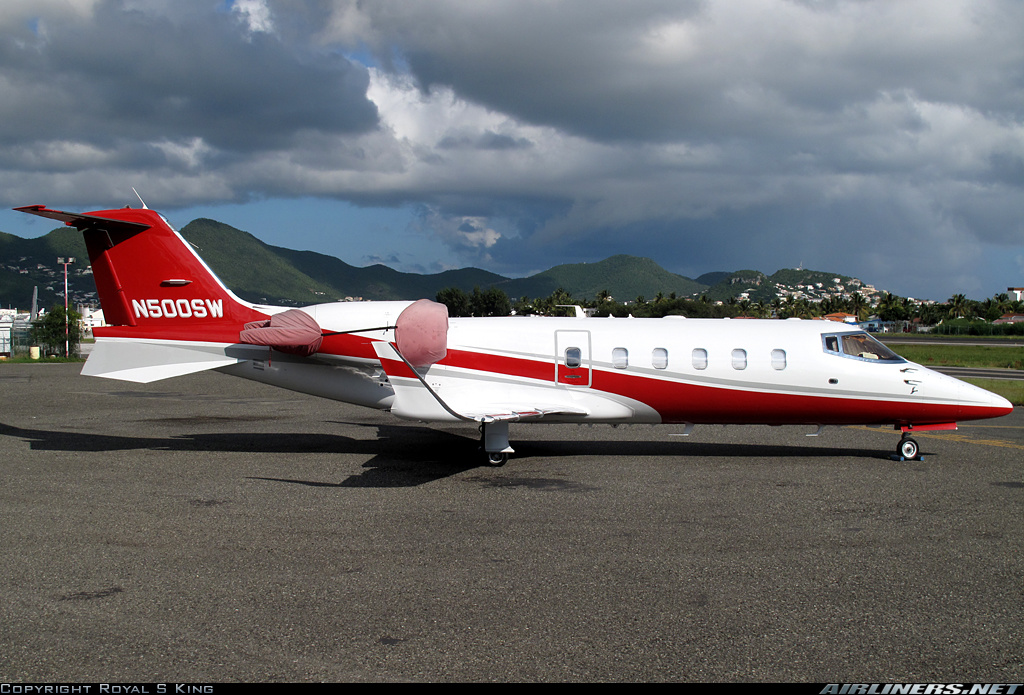
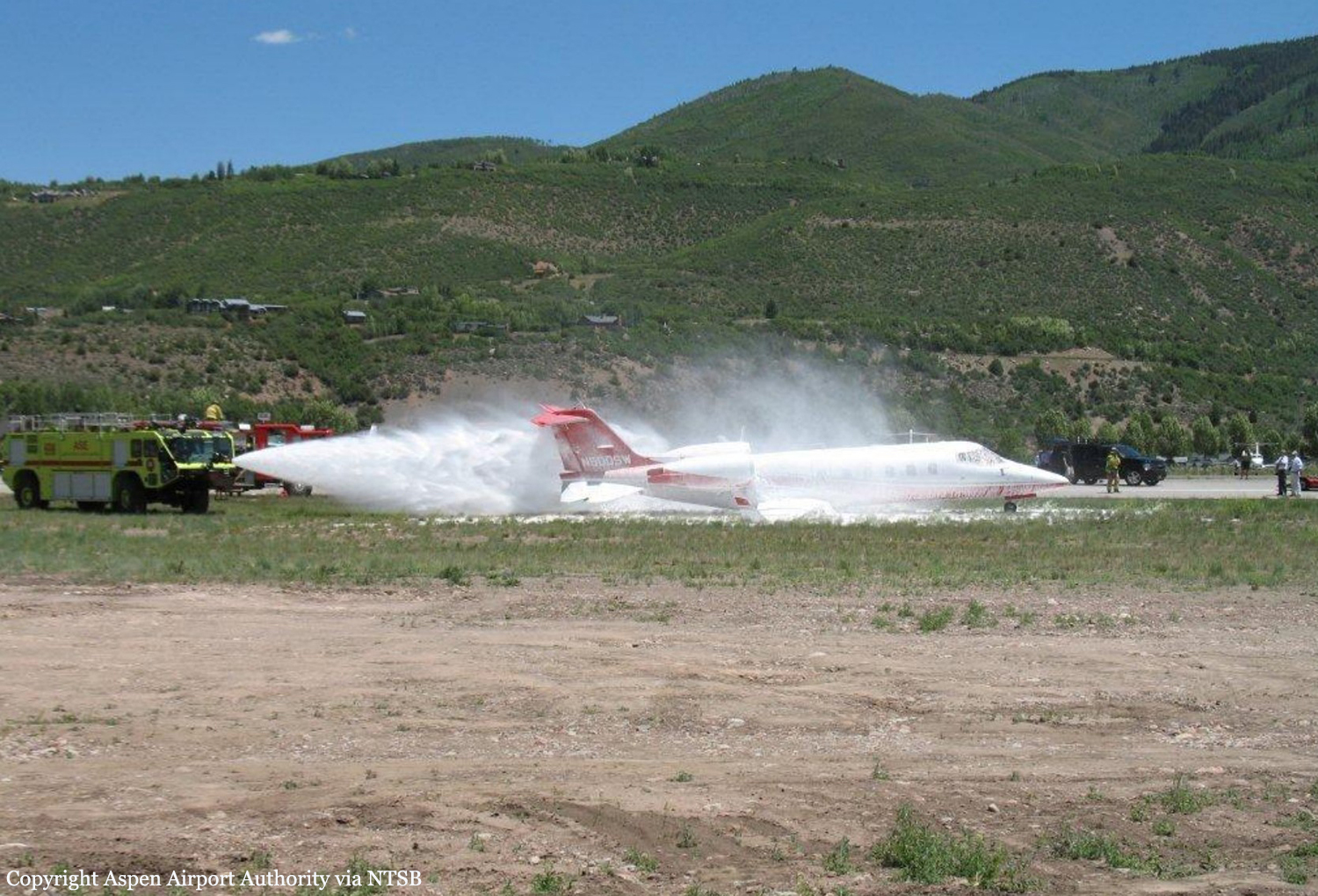
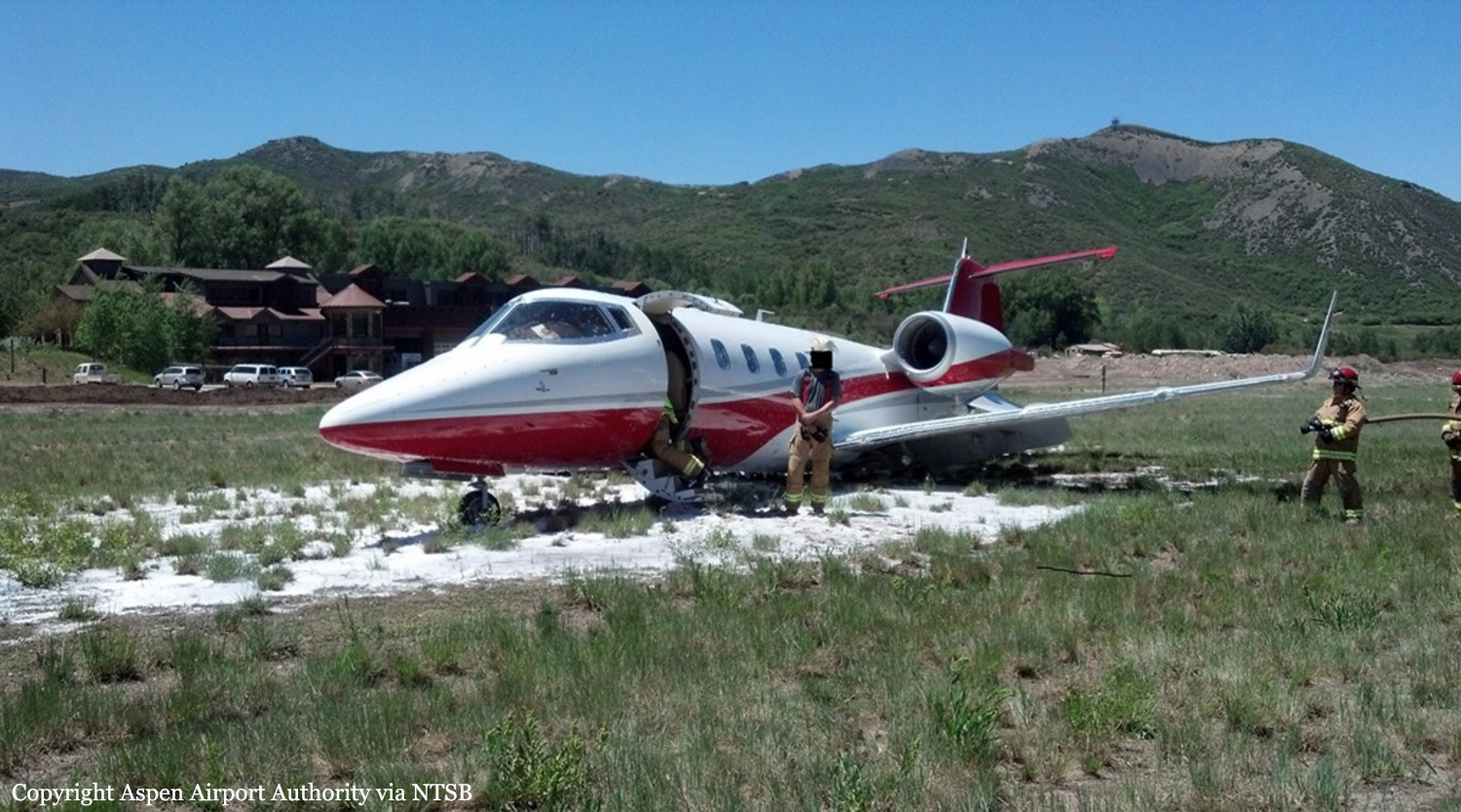
Crash of a Beechcraft E18S in Miami: 1 killed
Date & Time:
May 2, 2011 at 0809 LT
Registration:
N18R
Survivors:
No
Schedule:
Miami - Marsh Harbour
MSN:
BA-312
YOM:
1957
Crew on board:
1
Crew fatalities:
Pax on board:
0
Pax fatalities:
Other fatalities:
Total fatalities:
1
Aircraft flight hours:
13221
Circumstances:
After taking off from runway 9L at his home airport and making an easterly departure, the pilot, who was also the president, director of operations, and chief pilot for the on-demand passenger and cargo operation, advised the air traffic controller that he was turning downwind. According to witnesses, the airplane did not sound like it was developing full power. The airplane climbed to about 100 feet, banked to the left, began losing altitude, and impacted a tree, a fence, and two vehicles before coming to rest in a residential area. A postcrash fire ensued, which consumed the majority of the cabin area and left wing. Examination of the accident site revealed that the airplane had struck the tree with its left inboard wing about 20 feet above ground level. Multiple tree branches exhibiting propeller cuts were found near the base of the tree. Propeller strike marks on the ground also corresponded to the location of the No. 1 (left side) propeller. There were minimal propeller marks from the No. 2 (right side) propeller. Examination of the propellers revealed that the No. 1 propeller blades exhibited chordwise scratching and S-bending, consistent with operation at impact, but the No. 2 propeller blades did not exhibit any chordwise scratching or bending, which indicates that the No. 2 engine was not producing power at the time of impact. There was no evidence that the pilot attempted to perform the manufacturer’s published single engine procedure, which would have allowed him to maintain altitude. Contrary to the procedure, the left and right throttle control levers were in the full-throttle position, the mixture control levers were in the full-rich position, neither propeller was feathered, and the landing gear was down. Postaccident examination of the No. 1 engine revealed no evidence of any preimpact malfunction or failure. However, the No. 2 engine's condition would have resulted in erratic and unreliable operation; the engine would not have been able to produce full rated horsepower as the compression on four of the nine cylinders was below specification and both magnetos were not functioning correctly. Moisture and corrosion were discovered inside the magneto cases; the left magneto sparked internally in a random pattern when tested and its point gap was in excess of the required tolerance. The right magneto's camshaft follower also exhibited excessive wear and its points would not open, rendering it incapable of providing electrical energy to its spark plugs. Additionally, the main fuel pump could not be rotated by hand; it exhibited play in the gear bearings, and corrosion was present internally. When the airplane was not flying, it was kept outdoors. Large amounts of rain had fallen during the week before the accident, which could have led to the moisture and corrosion in the magnetos. Although the pilot had been having problems with the No. 2 engine for months, he continued to fly the airplane, despite his responsibility, particularly as president, director of operations, and chief pilot of the company, to ensure that the airplane was airworthy. During this period, the pilot would take off with the engine shuddering and would circle the departure airport to gain altitude before heading to the destination. On the night before the accident, the director of maintenance (DOM) replaced the No. 1 cylinder on the No. 2 engine, which had developed a crack in the fin area and had oil seeping out of it. After the DOM performed the replacement, he did not do a compression check or check the magnetos; such checks would have likely revealed that four of the remaining cylinders were not producing specified compression, that the magnetos were not functioning correctly, and that further maintenance was necessary. Review of the airplane's maintenance records did not reveal an entry for installation of the cylinder. The last entry in the maintenance records for the airplane was an annual and a 100-hour inspection, which had occurred about 11 months before the accident.
Probable cause:
The pilot’s improper response to a loss of power in the No. 2 engine and his failure to ensure that the airplane was airworthy. Contributing to the accident was the inadequate engine maintenance by the operator's maintenance personnel.
Final Report:
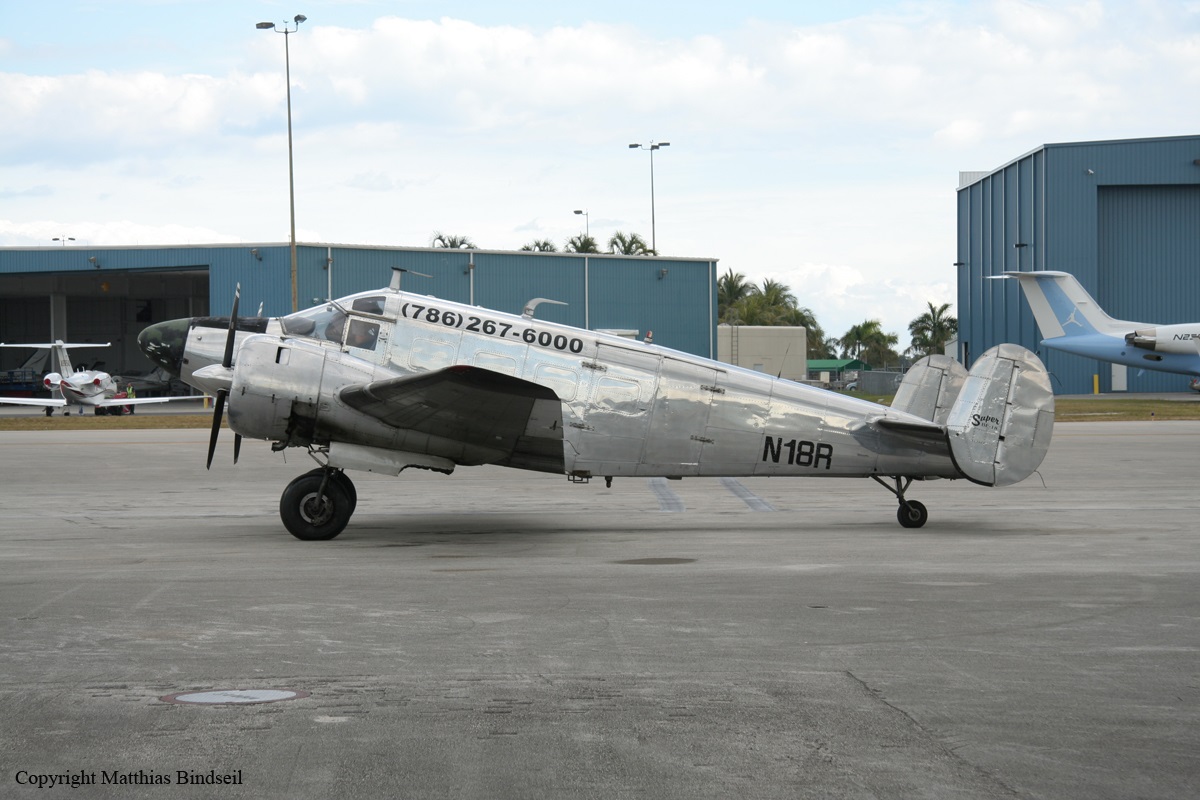

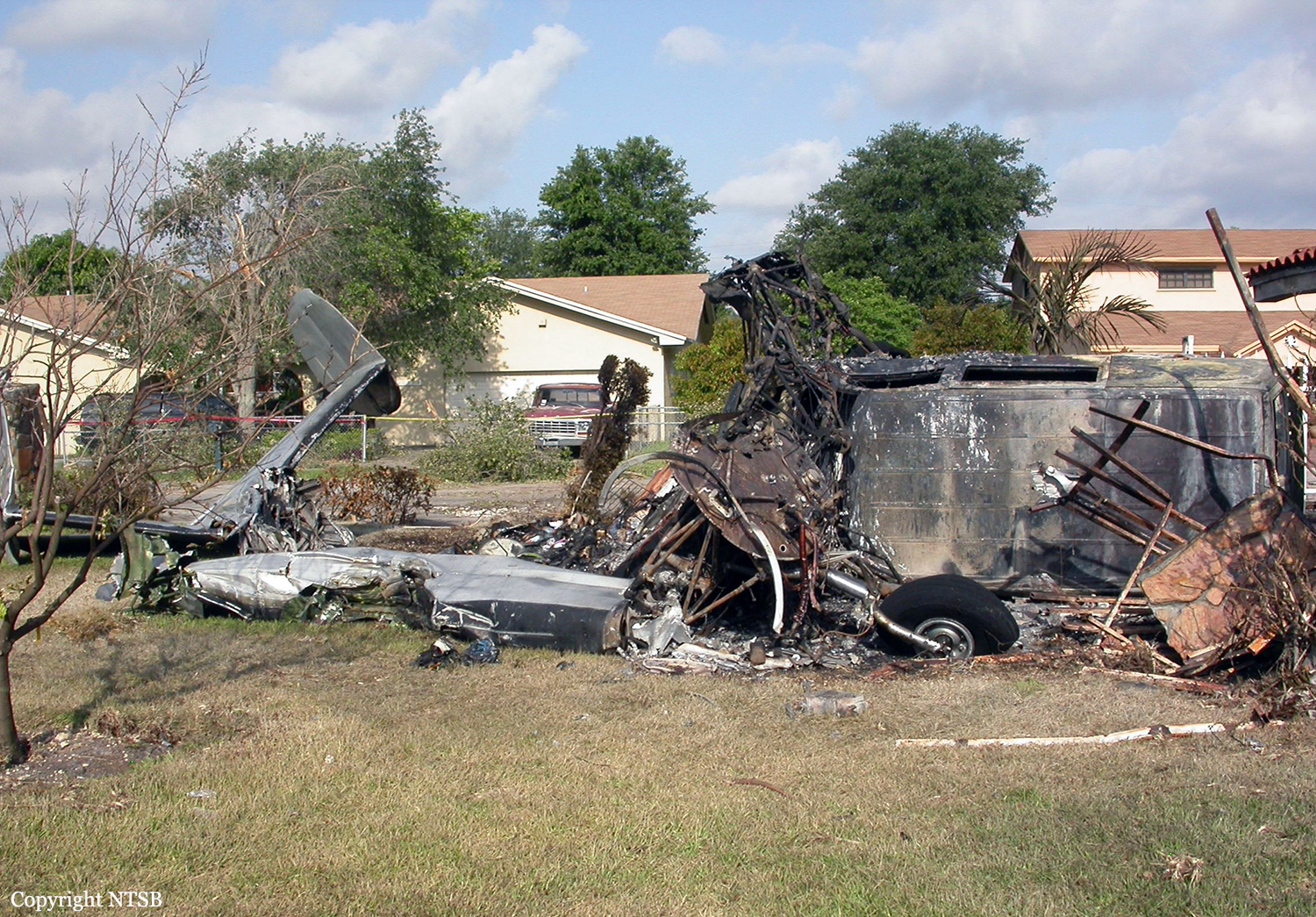
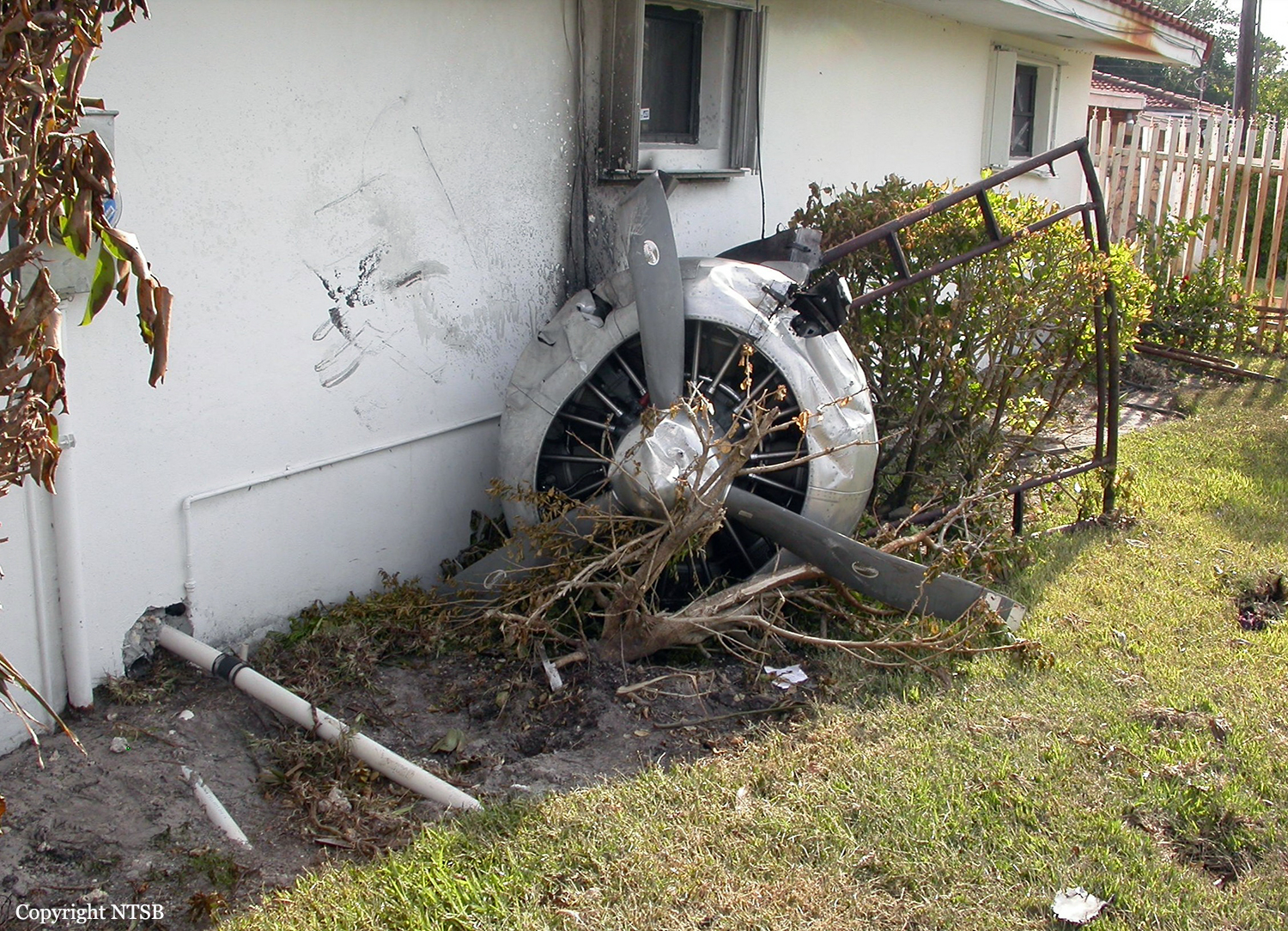
Crash of a Convair CV-340-70 in Miami
Date & Time:
Dec 4, 2004 at 0851 LT
Registration:
N41626
Survivors:
Yes
Schedule:
Miami – Nassau
MSN:
274
YOM:
1955
Crew on board:
2
Crew fatalities:
Pax on board:
0
Pax fatalities:
Other fatalities:
Total fatalities:
0
Captain / Total hours on type:
2400.00
Copilot / Total hours on type:
964
Aircraft flight hours:
18465
Circumstances:
The pilot stated that when the airplane was 3 miles east of the shoreline, at 3,000 feet, he felt a short tremor in the left engine followed by loss of power from the left engine. The pilot elected to return to the departure airport while declaring an emergency to air traffic control. During the process of securing the left engine the pilot noticed the propeller did not feathered and the airplane was descending quickly. He maneuvered the airplane and ditched in a lake. On September 26, 2003 engine s/n: 34592 was removed from the accident airplane due to high oil consumption with 1,225 hours of time in service. It was reportedly preserved and stored at the operator's warehouse. The mechanic who reportedly preserved the engine stated he followed the steps in the manual that was provided by the operator. On October 27, 2004 the left engine, s/n: NK510332, which was producing metal for months, was removed and engine s/n: 34592 was taken out of preservation and installed in the left position on the accident airplane with a new overhauled propeller assembly. On November 06, 2004, the left engine's, s/n: 34592, propeller governor was replaced due to the left propeller slow to response to power setting. During the post accident engine examination, the engine's main oil screen was observed with deposits of metal flakes and fragments, the oil scavenge pump would not rotate and had deposits of metal fragments internally; the engine was seized and wound not rotate. Catastrophic damage was observed to the accessories drive gears, oil transfer tube, and protection covers in the front accessory area. It was observed during a visual inspection of the crankshaft and bearings, including the front journal and front crankpin had damaged and sections of their respective bearings missing. The master rod bearing had incurred a catastrophic failure. Several cylinders skirts were found with impact marks from piston rods. Before removing the propeller assembly from the engine, the propeller feather system was flush with fresh oil and pressured with a feathering pump; the propeller blades were observed moving toward the feather position. Examination of the propeller assembly revealed metal contamination throughout the system; the propeller's governor screen gasket was clogged with metal contamination. The maintenance manual provided by the operator used for the engine preservation details several tasks required to be accomplished to the engine for proper engine preservation (i.e. thrust bear, cylinder, and propeller shaft treatments), which the mechanic did not mention he performed. No documentation for inspection and condition status of the dehydrator plugs were available. Documentation for flushing of contamination from the metal producing engine, s/n NK510332, was not available nor knowledge by the operator if since a process was preformed to the left engine's oil tank and its system before installation of engine s/n: 34592. An FAA review of the cargo manifest discovered two different manifest weights. The cargo manifest obtained at the accident scene showed a total of 267 pieces of cargo annotated at a total weight of 10, 837 lbs. The sealed cargo manifest package showed a total of 267 pieces of cargo annotated at a total weight of 14,182 lbs. The maximum payload weight for the accident airplane is 13,586 lbs.
Probable cause:
The improper maintenance of the left engine by company maintenance personnel (failure to flush metal from the oil system and failure to properly preserve the engine for storage) resulting in a total failure of the master rod bearing and contamination of the engine oil system with metal, which prevented the left propeller from feathering. This resulted in the airplane being unable to maintain altitude following loss of engine power and subsequent ditching in a lake. A factor in this accident is the aircraft operator and flight crew exceeding the maximum allowable takeoff weight for the airplane.
Final Report:


